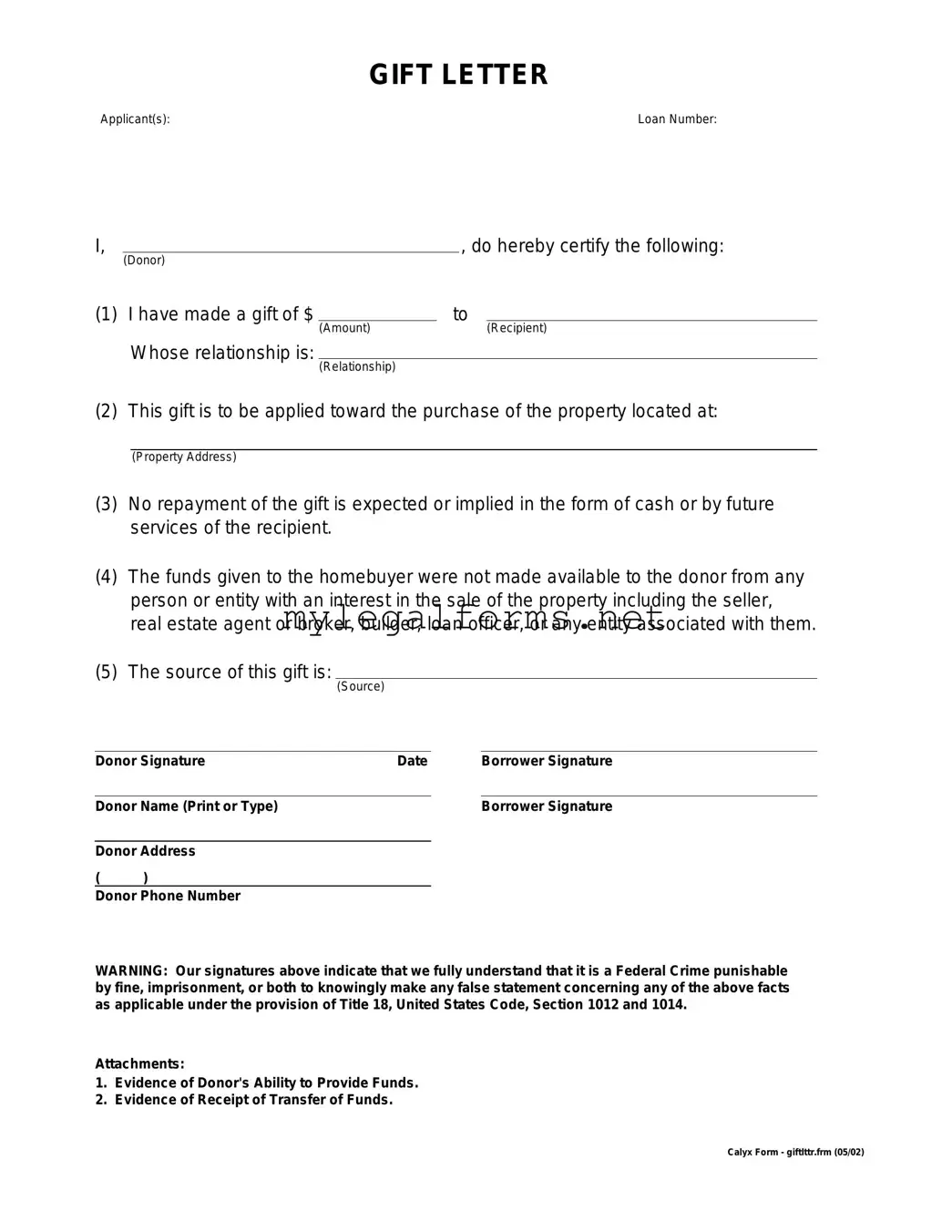When filling out a Gift Letter form, individuals often overlook crucial details that can lead to complications down the line. One common mistake is failing to clearly state the relationship between the giver and the recipient. This information is vital, as lenders want to ensure that the gift is legitimate and not a disguised loan. Without this clarity, the form may be deemed incomplete or questionable.
Another frequent error involves not specifying the amount of the gift. Some people assume that stating the relationship is enough, but lenders require the exact dollar amount. Omitting this detail can raise red flags and delay the approval process. It is essential to be transparent and precise about the gift amount to avoid any misunderstandings.
Additionally, many individuals forget to include the date the gift was made. This date is important for establishing the timeline of the transaction. A gift made too close to a loan application may look suspicious, leading lenders to question its legitimacy. Therefore, always include the date to provide a complete picture of the gift.
People also tend to overlook the need for signatures. Both the giver and the recipient should sign the Gift Letter form to confirm that the gift is genuine and that no repayment is expected. Failing to obtain these signatures can result in the form being rejected, which could delay the financing process.
Another mistake is not providing sufficient documentation to support the gift. While the Gift Letter form is essential, lenders may also request bank statements or other proof of funds. Without this supporting documentation, the lender may question the source of the funds, which can complicate matters further.
Finally, individuals sometimes neglect to read the instructions carefully. Each lender may have specific requirements for the Gift Letter form, and not adhering to these can lead to issues. By taking the time to understand what is needed, individuals can ensure that their form is completed correctly and submitted without unnecessary delays.

